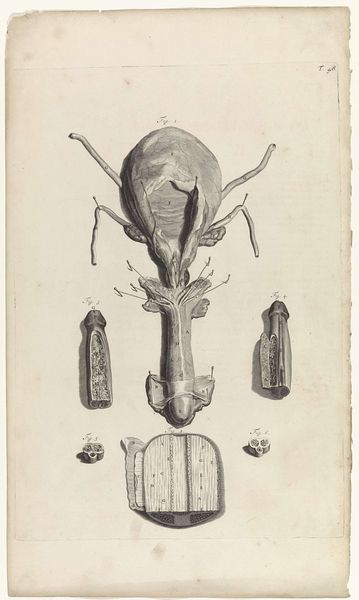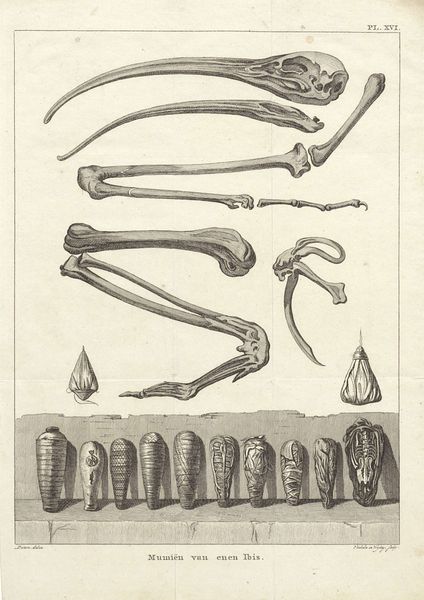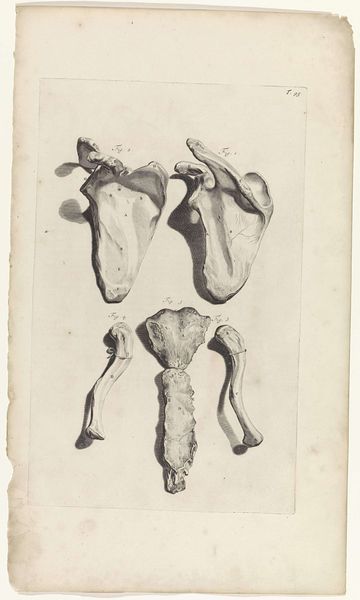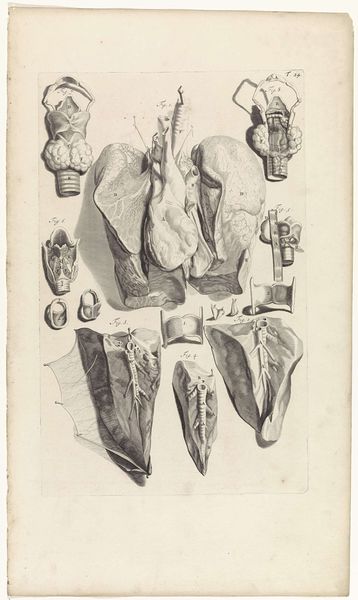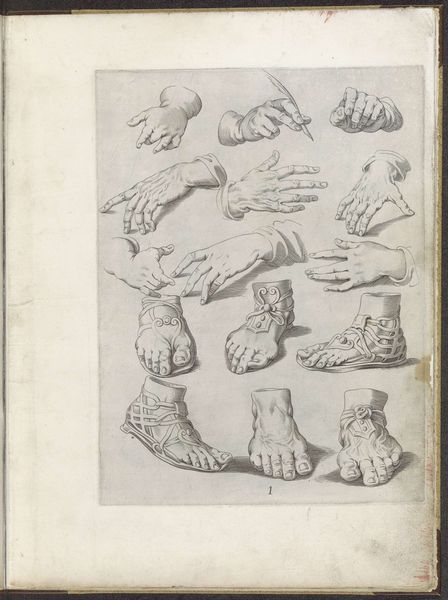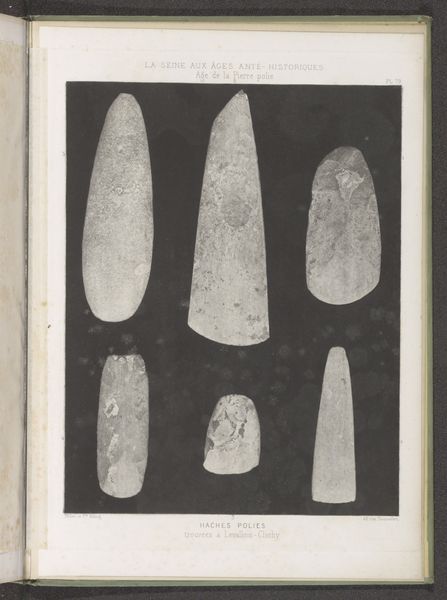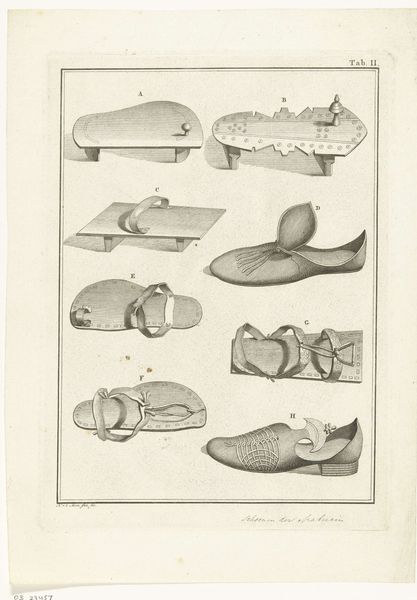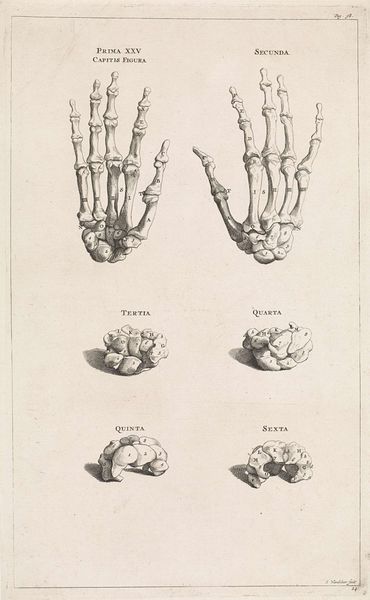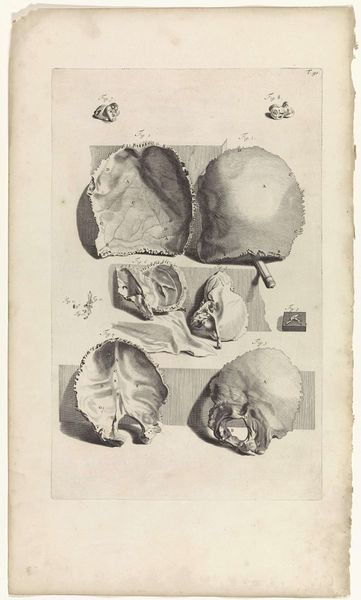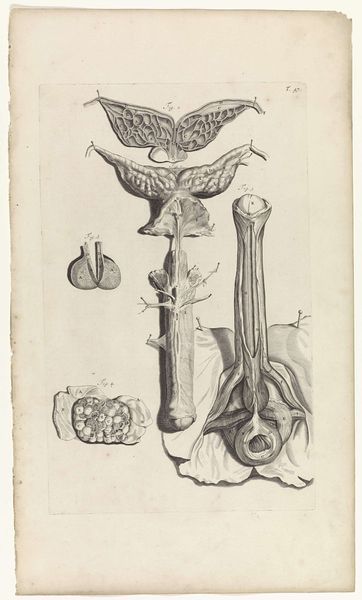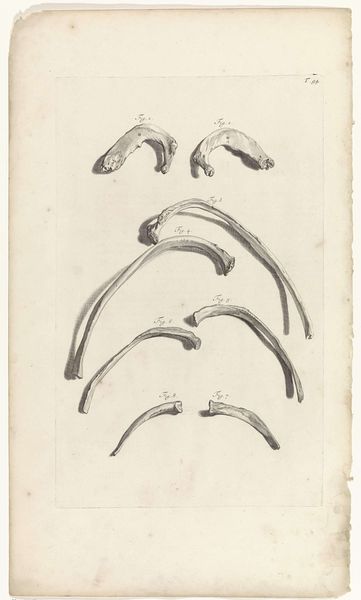
drawing, print, graphite, engraving
#
portrait
#
drawing
# print
#
figuration
#
graphite
#
history-painting
#
academic-art
#
engraving
#
realism
Dimensions: width 275 mm, height 440 mm
Copyright: Rijks Museum: Open Domain
Pieter van Gunst made this anatomical study of hand bones using etching. During the late 17th and early 18th centuries, the scientific revolution was changing how people saw the body. Anatomy, once shrouded in mystery, was increasingly subject to empirical investigation. This etching reflects the intersection of art and science during this period, revealing a growing interest in understanding the human form through detailed observation and documentation. Consider the implications of representing the human body in such a clinical manner. What does it mean to dissect and display the human form in the pursuit of knowledge? This anatomical study encourages us to reflect on the cultural and ethical implications of our pursuit of scientific understanding. It asks us to confront our own mortality and to consider the ways in which the human body has been historically viewed, studied, and represented.
Comments
No comments
Be the first to comment and join the conversation on the ultimate creative platform.

